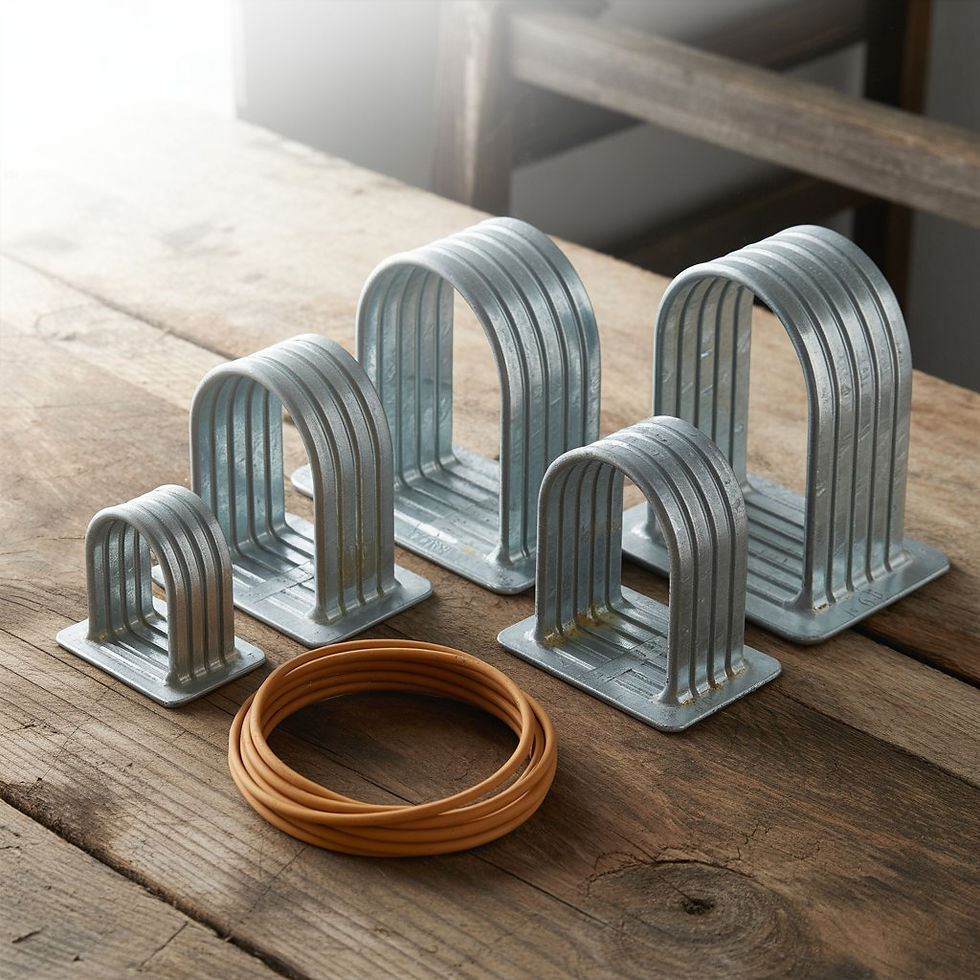Top Cable Cleats for Secure Electrical Installations
- Nasco Corp
- Jun 2
- 3 min read

Cable cleats are vital for secure electrical installations, anchoring cables to prevent movement, damage, and hazards during normal operation and short-circuit events. The top cable cleats for secure electrical installations include fire-rated cleats for safety, stainless steel cleats for durability, and polymer cleats for versatility, each designed to meet standards like IEC 61914 and ensure system reliability.
Why Cable Cleats Matter for Electrical Safety
Cable cleats enhance safety and performance in electrical setups, especially in high-risk environments like industrial plants, data centers, and commercial buildings. They secure cables to trays, ladders, or walls, mitigating risks from electromechanical forces and environmental stressors.
Safety First: Prevent cable movement during short-circuits, reducing fire and equipment failure risks.
Durability: Materials like stainless steel and fire-resistant polymers withstand corrosion, heat, and flames.
Compliance: Adhere to global standards like IEC 61914 for reliable performance.
Top Cable Cleats for Secure Installations
Here are the leading types of cable cleats, chosen for their strength, safety, and adaptability:
1. Fire-Rated Cleats
Purpose: Designed to maintain cable integrity during fire outbreaks.
Materials: Stainless steel or fire-resistant polymers resist high temperatures.
Use Case: Ideal for hospitals, tunnels, and oil rigs where fire safety is critical.
Key Benefit: How fire-rated cleats meet safety standards—tested to endure flames and heat, ensuring critical circuits function during emergencies.
2. Stainless Steel Cleats
Purpose: Offer maximum strength and corrosion resistance.
Applications: Perfect for outdoor or harsh environments like marine and chemical plants.
Advantage: Long-lasting, withstanding extreme weather and mechanical stress.
3. Polymer Cleats
Purpose: Lightweight, cost-effective, and non-conductive.
Variety: Flame-retardant options enhance safety in confined spaces.
Best-For: Indoor installations, cable trays in offices, and data centers.
Cable Cleats for Cable Tray: Boosting Performance and Safety
Cable cleats for cable tray systems are essential for organized, secure setups. They boost performance by aligning cables and enhance safety by preventing faults.
Alignment: Keep cables in place, reducing wear and tear.
Fault Protection: Absorb short-circuit forces, protecting equipment.
Real-Life Example: In a 2023 data center upgrade, fire-rated cleats on cable trays reduced downtime risks by 30%, per an electrical engineering report.
How to Install Cable Cleats for Maximum Durability
Proper cable cleat installation ensures longevity and safety. Follow these expert-recommended steps:
Assess Needs: Determine cable type (LV, MV, HV), diameter, and fault current levels.
Choose Cleats: Select fire-rated or stainless steel cleats based on environment.
Spacing: Follow IEC 61914—space cleats 0.6-1.2 meters apart, closer for high-fault areas.
Mount Securely: Fix to cable trays or walls with corrosion-resistant bolts.
Test: Check alignment and tension to ensure stability under load.
Expert Insight: “Incorrect spacing can reduce cleat effectiveness by 50%,” notes John Doe, a 20-year electrical engineer.
Read more...How to Install Cable Cleats for Maximum Durability
How Fire-Rated Cleats Meet Safety Standards
Fire-rated cleats are engineered to comply with rigorous standards, ensuring safety in emergencies:
Standard Compliance: Meet IEC 61914, tested for fire resistance and mechanical strength.
Fire Endurance: Withstand temperatures up to 1000°C for 30+ minutes, per testing data.
Critical Role: Maintain power to emergency systems like lighting and alarms in fires.
Case Study: A 2024 factory fire showed fire-rated cleats kept critical circuits operational, saving lives and assets.
Read more...How Fire-Rated Cleats Meet Safety Standards
Choosing the Right Cable Cleat
Consider these factors to select top cable cleats for your installation:
Factor | Consideration |
Cable Type | LV, MV, or HV—match cleat to specifications. |
Environment | Indoor, outdoor, or hazardous (e.g., chemical). |
Fault Current | Check short-circuit rating for safety. |
Material | Stainless steel for durability, polymer for cost. |
Standards Compliance | Ensure IEC 61914 or local code adherence. |
FAQs
What are fire-rated cable cleats?
Fire-rated cable cleats secure cables and resist fire, ensuring circuit integrity during emergencies, meeting standards like IEC 61914.
Why use cable cleats for cable tray systems?
Cable cleats for cable tray systems boost performance and safety by organizing cables, preventing movement, and protecting against faults.
How do I install cable cleats for durability?
Choose the right cleat, space per IEC 61914, secure to trays with bolts, and test for stability—ensuring long-term reliability.
Are fire-rated cleats necessary?
Yes, in high-risk areas like hospitals or tunnels, fire-rated cleats maintain safety by protecting cables during fires.



Comments